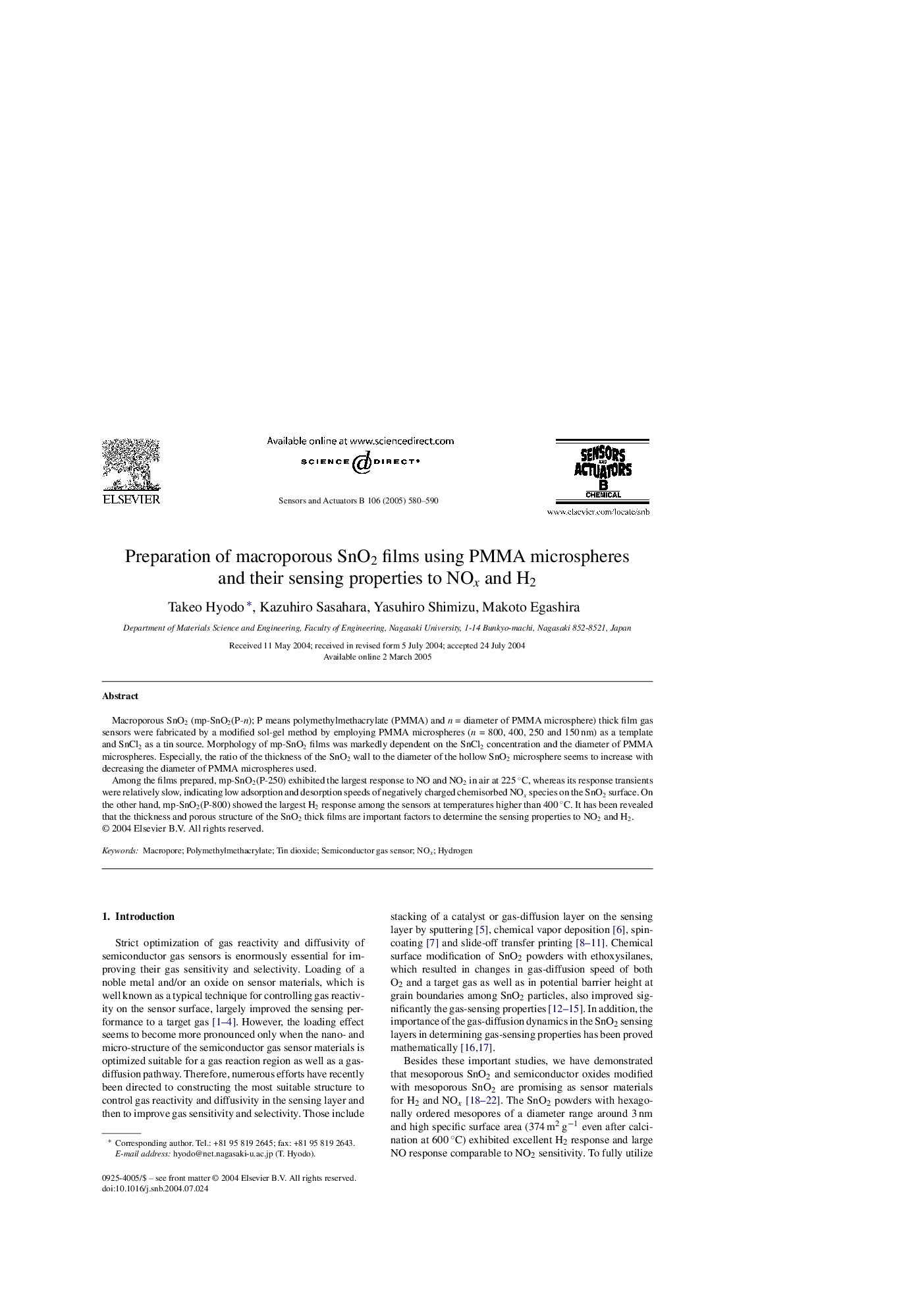| Article ID | Journal | Published Year | Pages | File Type |
|---|---|---|---|---|
| 10410961 | Sensors and Actuators B: Chemical | 2005 | 11 Pages |
Abstract
Among the films prepared, mp-SnO2(P-250) exhibited the largest response to NO and NO2 in air at 225 °C, whereas its response transients were relatively slow, indicating low adsorption and desorption speeds of negatively charged chemisorbed NOx species on the SnO2 surface. On the other hand, mp-SnO2(P-800) showed the largest H2 response among the sensors at temperatures higher than 400 °C. It has been revealed that the thickness and porous structure of the SnO2 thick films are important factors to determine the sensing properties to NO2 and H2.
Related Topics
Physical Sciences and Engineering
Chemistry
Analytical Chemistry
Authors
Takeo Hyodo, Kazuhiro Sasahara, Yasuhiro Shimizu, Makoto Egashira,
